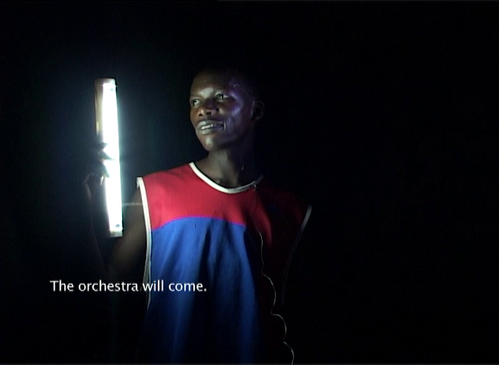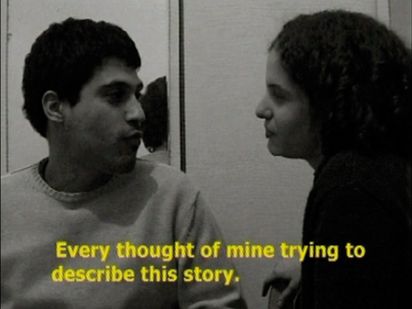It begins like a horror movie - intense darkness accompanied by an ominous, gradually swelling, spherical sound. A young man stands alone, illuminated only by the glow of the cold neon light he holds in his hand. He gazes at the resting cow before him. Then he begins to tell his life story as the sole person on this planet and about his happy relationship with his wife, a cow. As the film proceeds, other men also relay their equally absurd stories, including tales of talking cars or trips to the North Pole in half a second.
NeÏl Beloufa (*1985) asked the men to recount their vision of the future in the present tense. In this way, the future imagined by the young men appears tangible yet distanced, at times unsettling. In the suburbs of Bamako, the capital of Mali, Beloufa created an improvised science-fiction film in which reality and fiction overlap. With Kempinski, the French-Algerian artist achieved his breakthrough on the art market. At the time, he was only 22 years old and studying at the École Nationale Supérieure des Arts Décoratifs in Paris.
He travelled to Mali on a class trip, and the film was conceived as a protest, through which he sought to subvert the assignment of producing a documentary on Africa. For the Kempinski screening, Beloufa created an installation made of inexpensive MDF panels, arranging them to resemble a cinema setting. Kempinski is the first in an extensive series of works in which the artist explores the consequences of a society shaped by new technologies.




